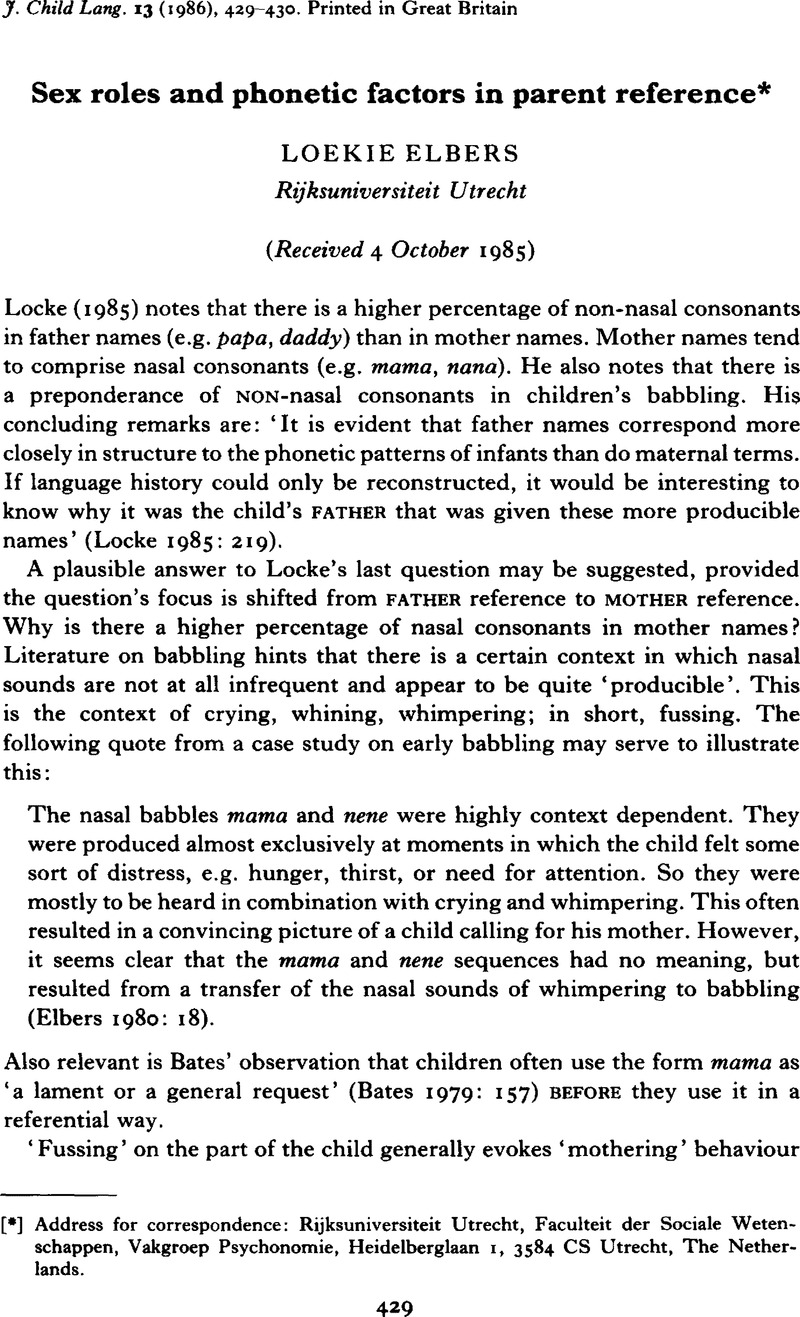No CrossRef data available.
Article contents
Sex roles and phonetic factors in parent reference*
Published online by Cambridge University Press: 26 September 2008
Abstract
An abstract is not available for this content so a preview has been provided. Please use the Get access link above for information on how to access this content.

- Type
- Notes and Discussion
- Information
- Copyright
- Copyright © Cambridge University Press 1986
References
REFERENCES
Bates, E. (1979). The emergence of symbols: cognition and communication in infancy. New York: Academic Press.Google Scholar
Elbers, L. (1980). Cognitive principles of babbling: a case study. Report 21, Psychological Laboratory, University of Utrecht, The Netherlands.Google Scholar
Harding, C. G. (1983). Setting the stage for language acquisition: communication development in the first year. In Golinkoff, R. M. (ed.), The transition from prelinguistic to linguistic communication. Hillsdale, NJ: Erlbaum.Google Scholar
Locke, J. L. (1985). The role of phonetic factors in parent reference. JChLang 12. 215–20.Google ScholarPubMed
Snow, C. (1977). The development of conversation between mothers and babies. JChLang 4. 1–22.Google Scholar




